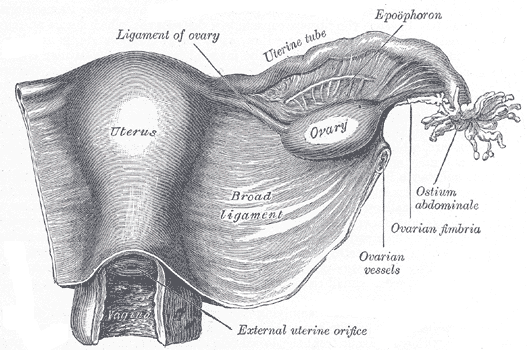Ovarian vein
| Cardiology Network |
 Discuss Ovarian vein further in the WikiDoc Cardiology Network |
| Adult Congenital |
|---|
| Biomarkers |
| Cardiac Rehabilitation |
| Congestive Heart Failure |
| CT Angiography |
| Echocardiography |
| Electrophysiology |
| Cardiology General |
| Genetics |
| Health Economics |
| Hypertension |
| Interventional Cardiology |
| MRI |
| Nuclear Cardiology |
| Peripheral Arterial Disease |
| Prevention |
| Public Policy |
| Pulmonary Embolism |
| Stable Angina |
| Valvular Heart Disease |
| Vascular Medicine |
Editor-In-Chief: C. Michael Gibson, M.S., M.D. [1]
The ovarian vein, the female gonadal vein, carries deoxygenated blood from its corresponding ovary to inferior vena cava or one of its tributaries. It is the female equivalent of the testicular vein, and is the venous counterpart of the ovarian artery. It can be found in the suspensory ligament of the ovary.
It a paired vein, with one supplying each ovary.
- The right ovarian vein generally joins the inferior vena cava.
- The left ovarian vein, unlike the right, often joins the left renal vein instead of the inferior vena cava.
Pathology
Thrombosis of ovarian vein is associated with postpartum endometritis, pelvic inflammatory disease, diverticulitis, appendicitis, and gynecologic surgery.
Additional images
-
Uterus and right broad ligament, seen from behind.
External links
- Template:SUNYAnatomyLabs - "Posterior Abdominal Wall: Tributaries to the Inferior Vena Cava"
